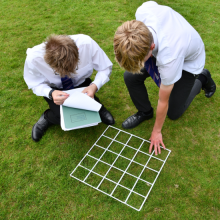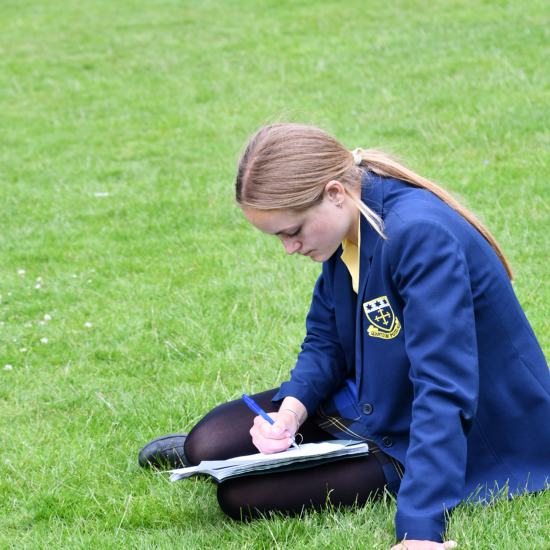
As part of their GCSE Biology studies, Year 10 have been learning about biodiversity and the different methods that can be employed to measure the biodiversity of an area.
They have also been discussing random sampling, how to collects non-biased and representative data, and what factors might impact the validity of their data.
This week, they used quadrats (wire squares covering a 0.25m2 area of ground) to sample areas of grassland on the school front lawn. They were asked to place their quadrat randomly, in this case by rolling a pair of dice and placing the quadrat in the corresponding square on the lawn. They then counted all of the different species in their quadrats, before pooling their findings. They used their findings to calculate an average and extrapolated it to estimate the total number of different organisms likely to be present on the whole lawn.
It was a useful exercise for Year 10 to appreciate the huge array of diversity in their local surroundings.


























